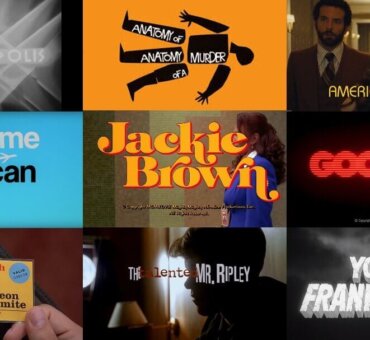From the moment the director shouts “action” to the premiere screening, producing a film involves hundreds of hours of footage that passes through many hands. Protecting footage from accidental loss and keeping projects away from internet leaks are just a few of the challenges film editors face. Therefore, it is important to know where leaks can occur and what kinds of systems safeguard footage.
Secure storage
Footage leaks are a risk during any stage of production. Whether directly siphoning the returns at the box office or contributing to a loss of hype and interest in an upcoming release, leaks must be stopped before they start.
In 2015, The Revenant hit torrent sites before its release, leaked by an employee of the studio who made copies of a screener. The employee was fined over one million dollars in damages and was even placed under house arrest. But the good news is that over the last couple of years, film leaks have dropped considerably.
One of the reasons film leaks have subsided in recent years is the advent of private and secure online screening environments. Up until very recently, thumb drives, unencrypted hard drives, and DVDs were distributed internally so that stakeholders could weigh in with their notes. One of the most notorious leakers in history, Carmine Caridi, did so by forwarding his screener DVDs by mail.
Contemporary security solutions include encrypting hard drives, minimizing physical storage when possible, and utilizing secure online review portals. Several enterprise-quality streaming solutions have won over studios in Hollywood including Codex PIX, Prime Focus Clear, Adobe’s Frame.IO, and Shift Media’s MediaSilo. The main advantage of using a web portal is that access to a film can be limited to a user for a set period, rather than hoping all physical copies are returned.
Footage storage
Post-production begins on set. It is the role of the post-production supervisor to ensure that the Digital Imaging Technician (DIT) serves as the liaison between the camera department and video editorial. This includes coordinating technical specifications concerning all things acquisition: resolution, codec, framerate, and colorspace. The DIT will prepare raw footage offloads in a way that the editorial team is expecting. In some markets, this role is referred to as a Data Management Technician (DMT) and is more affectionately referred to as data wrangling.
Hard drives are easily damaged or lost in shipping which introduces some anxiety during the backup process. To securely manage camera files, production follows the 3-2-1 approach to data management. Which is:
- 3 copies of the media
- 2 different types of media
- 1 copy off-site
Here is an example of what this would look like in a production workflow, with an additional highlight on how cloud services are being integrated onto modern productions:
Backup #1 – RAID
The first backup is to get the footage securely moved onto fast—and protected—storage. A typical RAID setup will feature 8 hard drives in an array and be set up with at least two disk protection, meaning if two of the eight drives were to fail the data would still be kept safe.
Backup #2 – Transfer drive
The second backup is used to move files from set to post-production. Since the files are going to be in transit, often by a courier, the DIT will utilize volume encryption in the form of either a password or a physical key. The files cannot be accessed if this transfer hard drive is intercepted without the password or key. This copy gets moved to either the video editor, a dailies facility, or the color correction facility; depending on the filming locations, budget, vendors, and workflow.
Backup #3 – LTO
LTOs are used in the film and television industry as a secure place to store all media acquired on set. They are a form of data tape designed for long-term archival. At around $10 per terabyte, LTO is popular because the cost is much lower than a typical SSD or hard drive. The LTO copy is used by the final color facility to load high-resolution files during the conform, after which the tape will be moved to a studio vault should the camera’s original files be needed again.
Backup #4 – Camera to Cloud
With a cloud workflow, an additional device (such as an Atomos Ninja) is connected to the camera. This additional recorder creates an optimized proxy file alongside the master media. As the recording of a take completes, the proxy is uploaded straight to Frame.IO, and the editorial gains instant access to the media. The Frame.IO copy is engineered to allow the video editors to start cutting right away, with the option to relink to higher-resolution camera files later. Should the internet connection drop during upload, the recording is stored on the device, and the upload resumes when a connection is re-established.
Film editor’s role
The film editor interacts with the director and producers in a way that very few on the call sheet have access to. Aside from the data wranglers, no other crew member has access to the entire unedited film. During the hiring process editors will most often be required to sign a nondisclosure agreement protecting the best interests of the film, meaning production details cannot be shared outside of work—even with family.
During edit sessions, the director or producer may post work inside the editing bay on Instagram. It is crucial to remember that you do not enjoy the same level of privilege and any photos might reveal a potential spoiler. If you do want to hype up a project on socials, do so by reposting something from a more senior production member, or sharing an official trailer once a project is announced. Otherwise, keep it under wraps.
Storage options for raw footage

Managing a feature film’s worth of unedited source footage can feel like a herculean task. For instance, a single camera feature filmed with a RED Komodo can easily produce more than 20 TB in media files. Adding a second camera doubles this count to 40 TB. The higher resolution sensor found on the DXL2 additionally adds to the data overhead. To contend with these increasing volumes of data, a variety of storage options are utilized in post, including:
Large volume arrays
Plain old hard drives still offer great value for the dollar, and now feature storage sizes up to 18TB per disk. While drives are vulnerable to failure, their low cost makes them suitable for large arrays that work in tandem. 100TB RAIDs can be purchased from SanDisk, OWC, and Promise Technology for around $5,000 USD; more than enough protected storage to save an entire film on a single volume with room to spare. These kinds of storage sizes were previously reserved for budgets nearing six figures.
Frame.IO
Frame.IO is an increasingly exciting option. The developers have created lightweight proxy files that can be shared over a modest connection to allow the editorial team to be in continuous communication with production and offer them a chance to bypass daily workflows in the process. With a Frame.IO workflow, editors work on proxy files from a modest system, such as a laptop. This proxy workflow assumes that timelines will be relinked to the camera’s original media later.
Alternatively, Frame.IO camera connect also supports many high-resolution formats including ProResHQ, which on many projects can be used for acquisition, editorial, and finishing. Additional storage can be unlocked for a monthly price, though the overall cost adds up quickly depending on the video file sizes involved.
Blackmagic Cloud Store
Blackmagic has created an interesting hybrid product that combines the needs of professional post teams with the low cost of off-the-shelf computer components. M.2 blades are found in virtually every laptop produced over the past five years and offer fantastic performance and reliability. The Blackmagic Cloud Store uses the same M.2 storage blades. The result is lower prices and much faster performance when compared to traditional SSD workflows. While Blackmagic is new to the shared storage space, they may be the vendor to watch after such an impressive debut.
LucidLink
LucidLink is a cloud solution designed with video editors in mind. With LucidLink, a cloud server appears on the video edit’s system as if it were a hard drive. The video files are sent from the cloud down to the computer during playback by breaking up assets into manageable (and streamable) chunks. If any video lags during editing, merely waiting a few seconds often resolves the issue as the missing pieces are received and cached. Since high-resolution media can be used with LucidLink, no relinking is required to different versions of the media, and timelines can be rendered straight from the cloud.
Archiving; why store footage
A film goes on to have a life of its own long after the picture is locked and production winds down. On the indie side of the industry, a film can rarely break even on costs during its theatrical run. Online streaming and international sales are increasingly a requirement to see a return on investment.
Additional forms of distribution require post-production assets to meet the versioning needs of a sale including alternate cuts, versions without text, and handles surrounding commercial breaks. Having the completed film along with its source assets readily available can help generate more revenue long after the initial release.
Having camera raw versions of the final edit is a common requirement for films that are not currently finishing in HDR but may receive a new color correct on a future release. Similarly, a film mixed in 5.1 may be revisited with a proper Dolby Atmos mix.
That’s a wrap
While the thought of protecting an entire facility against data loss and security exploits seems intimidating, there are quite a few easy-to-implement tools such as MFA authentication and software drive encryption available to every professional film editor. While it may be tempting to cut costs by scaling back on storage and security, there is no greater loss than a compromised production unable to secure a proper (and unspoiled) release.






